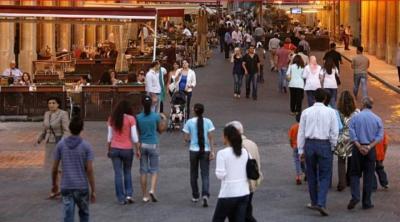The Minister of Tourism in the caretaker government, Walid Nassar, was compelled to travel 230 kilometers each day to launch the Tripoli tourism festivals, inaugurate a project in Miniyeh, and a tourist hotel in Dhoniyah. This indicates that the tourism sector remains an attractive element for investments, and what is invested can generate profits. If the tourism sector hopes for an income exceeding 3 billion dollars this summer, its benefits extend to various tourism and economic sectors, without the "favor" of the International Monetary Fund, which wishes to impose unpopular decisions on Lebanon in exchange for granting 3 billion dollars distributed over four years. Stakeholders in the tourism sector question the reasons preventing Lebanese officials from supporting this sector, at least politically, by halting their conflicts which negatively impact various economic sectors. Notably, in 2010, more than two million tourists entered Lebanon, excluding the expatriate Lebanese, spending over 9 billion dollars. This suggests that Lebanon can economically and financially recover, relying on the tourism sector while keeping politics from obstructing it, despite the negative repercussions from the COVID-19 pandemic and the Beirut port explosion which led to the devastation of over 2,500 tourism establishments. Lebanon urgently needs these dollars to prevent the continuation of the financial and economic collapse, especially since the heads of tourism unions greatly rely on the success of the summer season. They note that occupancy rates in all sectors exceeded 90 percent, and the head of the Travel and Tourism Offices Union, Mohammed Daghdouk, announced that the sector's operational rate reached between 95 and 100 percent during the Eid al-Adha holiday after two years of suffering. Even though the prices of renting tourism cars have decreased by 40 percent, the sector remains cheaper than those in neighboring countries, aiming to encourage expatriate Lebanese and some tourists to use these cars and support the sector. Daghdouk urged the Ministry of Interior to alleviate the pressure on car rental owners, who purchased about 150 new cars that have not yet been registered due to the closure of relevant authorities, and they requested the security forces to facilitate this season since the shortfall is not from their side but due to a strike among public sector employees.
Secretary-General of the Federation of Tourism Unions, Jean Beiruti, states that the situation today, with the injection of 3 or 4 billion dollars into the Lebanese market, is significant because this money will be distributed across various sectors and will achieve a complete spread across the Lebanese map, benefiting all sectors, and this money will be in fresh currency. However, the question remains: where will this money finally end up? It will likely go to safekeeping in the vault, as no decision has been made towards a solution after three years of crisis, and Lebanese officials have not enacted any capital control or found a solution for the banks and the banking sector. Through this tourist optimism, sector professionals demand political and security stability and are ready to secure billions of dollars in addition to what expatriates bring in. Tourism is currently experiencing its happiest days, contributing to the influx of fresh dollars into various economic sectors, through reunions with loved ones, relatives, and friends after a long absence, and through enjoying the remainder of the season in good health and safety. Even the president of the Restaurant Owners Syndicate, Tony Rami, remarked that regardless of the challenges and hurdles the sector faces, it remains a successful sector.




